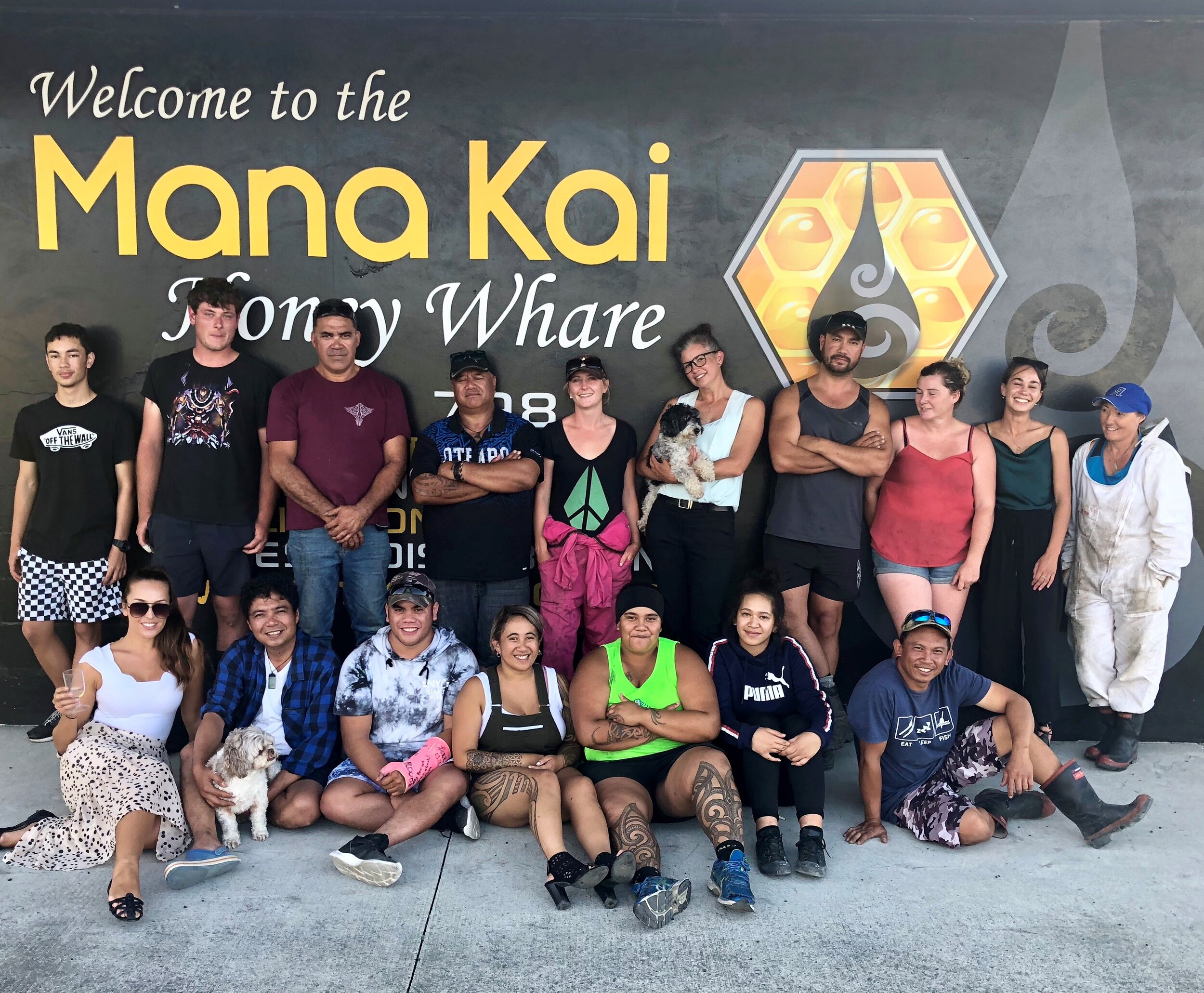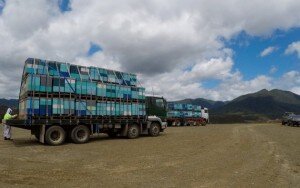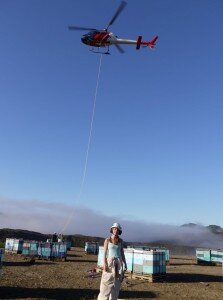Shelley Glasspool - New Zealand Beekeeping Experience
Mana Kai Honey were lucky to have Shelley join the team last season as part of her apprenticeship. This is a snippet of Shelley’s blog - you can read the full bog here: https://www.bjsherriff.co.uk/blog/what-a-year-a-manuka-beekeeping-experience-by-shelley-glasspool/
As part of my BFA apprenticeship, I also get the opportunity to work abroad and gain experience from other beekeepers. I chose to take my opportunity in New Zealand, where I spent four months working for Mana Kai Honey company in the Northland of North Island. Being on the opposite side of the world and with opposite seasons, I was jammy enough to escape the English winter and swapped it for a beautiful New Zealand summer.
Beekeeping in New Zealand felt worlds apart from beekeeping in the UK. It seemed as though, everywhere you looked, there was honey for sale and bee hives in fields. No one seemed surprised when they asked what I did, not like at home. Very few people I speak to in the UK have ever met a beekeeper, never mind seen a working bee hive. In New Zealand, the people are more than accustomed to seeing trucks stacked with bee hives driving by, and keepers walking around in their suits. It was the norm. With a lush green climate, warm temperatures and just enough rain to keep the flora happy, New Zealand was pretty much the perfect country for beekeeping.
I was given a huge warm welcome into the Mana Kai team, which employed over twenty staff, including cleaners, extractors, carpenters, office staff, shop assistants and, of course, beekeepers. This was a big surprise, having spent two years working in a team of two, my boss Jo and me. And Mana Kai was considered a “small” company in comparison to opposition companies!
Having arrived part way into the season, the team was already in full swing, distributing supers and creating nucleuses. I was paired with Emma, herself relatively new to beekeeping, and was in charge of the new queen rearing operation. Our bosses, Bobby and Sara felt we would make a good pair, both being able to share ideas and techniques. To begin with, our daily routine was not too dissimilar to mine at home. Emma and I would spend a certain amount of time working on the rearing colonies and grafting from breeders, then spend the remainder of the day travelling from site to site, checking colonies for laying queens, signs of swarming and their general status. A week flew by and I felt comfortably settled into my new position.
Then things began to change as we approached the manuka season. Now my time was being shared between helping Emma through the day and then the other beekeepers during the nights. With the manuka in bud stage, the team was working hard preparing to move the hives into the mountains, down south in Taupo. Throughout the day, the boys would be out checking colonies on the farthest sites, selecting those which would be taken to the manuka and compiling them onto pallets of four hives each. Then in the evening around 7pm, several beekeepers would separate into teams of two or more and head out in the yutes (pick up trucks).
With some sites being over an hour and a half away, we had to spread out to the smaller sites first and make our way back to the larger ones to work together. At each of the sites, we had to close off the selected colonies, already placed together on pallets, and strap them down. Then a fork lift or an adapted tractor would be used to lift the pallets on to the yutes for us to strap them down using industrial-sized ratchet straps, slightly different to our little hive straps at home!
Each night we collected around 30 pallets which were driven back and unloaded onto a “dump” site where we re-opened them. The next day, after queen rearing, we would return to the dump site to help the boys prepare the colonies. Each colony had to be at least eight frames of brood compiled into one brood box, with a healthy laying queen. Because manuka doesn’t produce much pollen and the mountains have little or no other forage, we had to give each colony a large handful of pollen substitute to sustain them. Finally, we applied a queen excluder, two more brood boxes (acting as supers) and a feeder.
This continued for the week, collecting and preparing, working an average of fifteen hours a day. Eventually it was time to take the first batch to Taupo. For this, the whole beekeeping team was needed. We met at the dump site early evening with fork lifts and HGV flat beds at the ready. A team of us would begin by closing all the three-hundred hives and tightening their straps. Then the forklift drivers loaded them onto the flat beds, where the other team shifted them into place and strapped them down to the trucks. Huge flat beds carrying hundreds of hives was one of the most spectacular things I had ever seen and they were now ready for the ten hour drive down south. There was no way I could sleep with the excitement of the past week and the thought of the next couple of days.
We drove through the night, with little stops until we reached another dump site. On arrival, I could see the mountains of manuka opposite the clearing where we were to distribute our hives. A huge ravine separated us and the mountains hundreds of feet below. Before the afternoon heat, we quickly unloaded all the pallets and re-opened the hives. With the bees free to fly through the day, we went back to our temporary accommodation, to sleep and relax until the next day.
Early morning, around 4am, I and the others rushed around the hundreds of colonies and once again closed their entrances and checked that they were tightly strapped down. Then we were instructed to strap groups of three pallets together with provided straps before the main operation took place. With everything prepared and sunlight just beginning to rise over the top of the mountains, we heard a whirring sound approaching. With the warm sun burning through the mist, we saw the helicopters coming towards us. The noise and the wind from their propellers covered us, kicking up dust and grit as they landed. With no other way into the mountain, the hives were going to have to be flown in. As the mist was lifting, some of our team were flown out and dropped off into different areas of the mountain.
The four helicopters then took turns to hovver overhead dangling an eighty foot chord to which we attached the strapped hives, to be distributed into the mountains. At each site, the hives were unhooked by the ground team and opened up. With the operation completed, we traveled back up north to repeat the process another two times until we had successfully moved all twelve hundred colonies down south and into the mountains. Here they remained for the next six weeks while the manuka was in bloom.
During that time, we stayed up north working on the remaining thousand or so colonies. Although these colonies were not strong enough to be worth moving to the manuka, they were perfectly capable of working the other “bush” flora around the surrounding area. Emma and I worked hard rearing queens and creating nucleuses, and joined in to help the boys working the other colonies too. The days were hot and I was starting to really feel the summer heat. I thought working in the heat of a Cornwall summer could be challenging, but this was another level. Temperatures on an average day were 27-30 degrees celcius. I was drowning in my suit.




